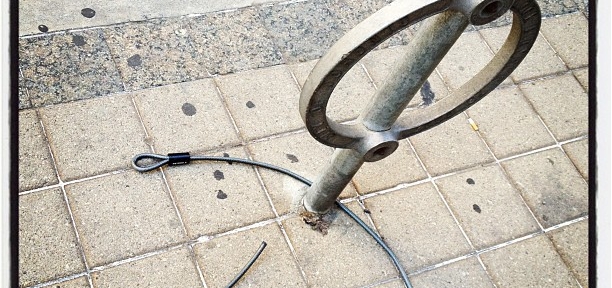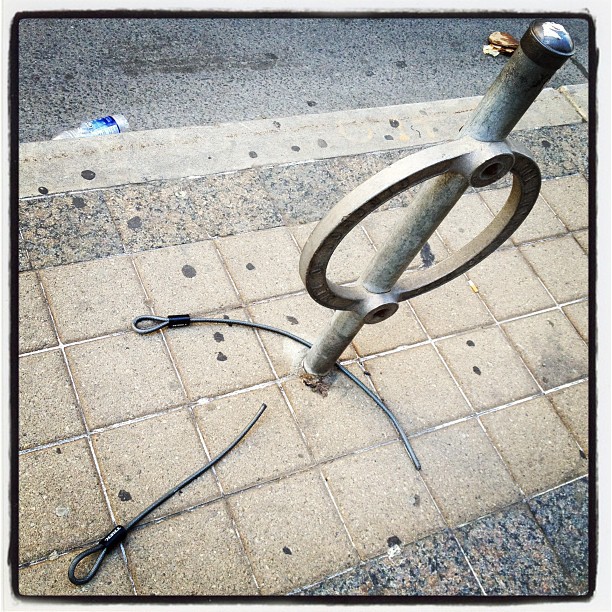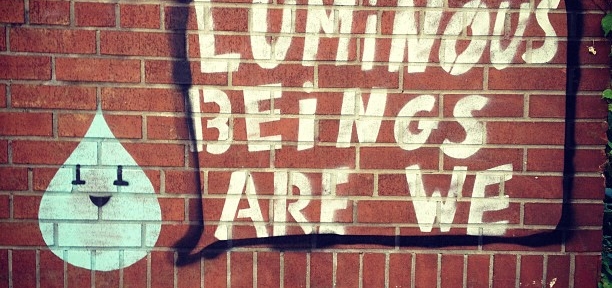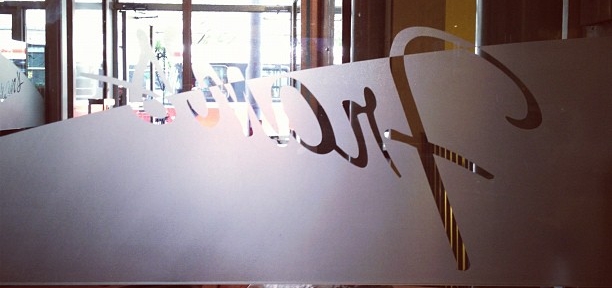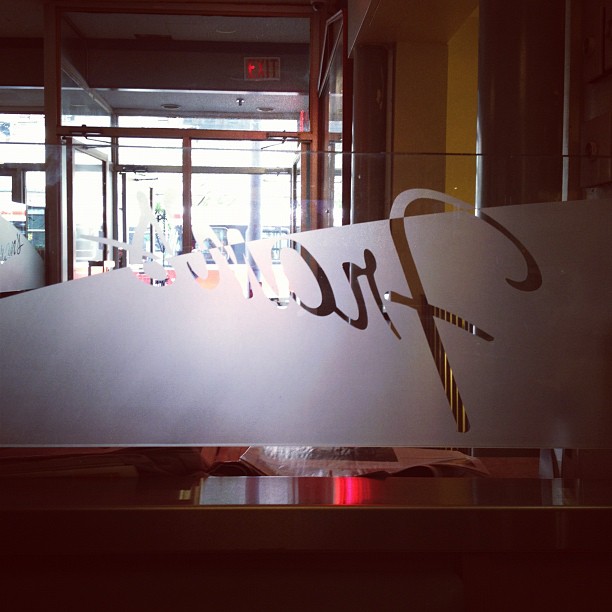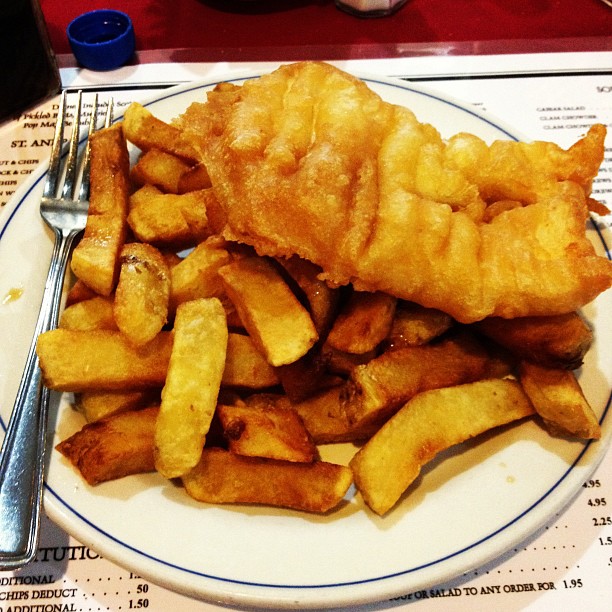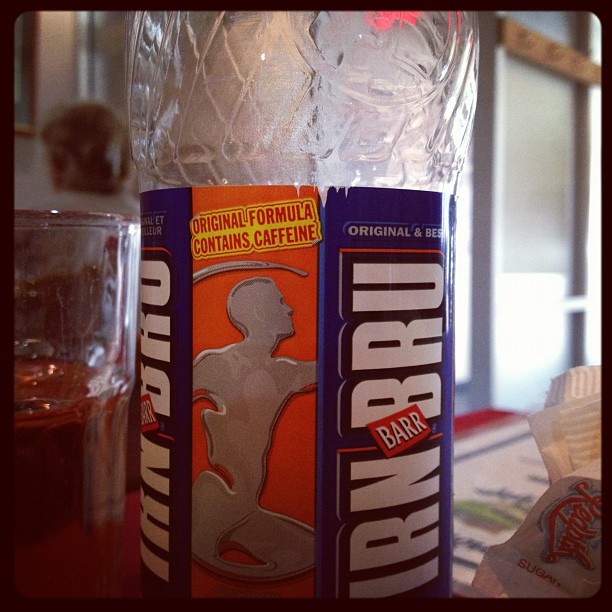Instagram filter used: X-Pro II
Author: scruss
-
Going Nowhere Fast

Damn, this is a fine album. Credited as “Stampfel & Weber — The Original Holy Modal Rounders”, it’s a 1981 Rounder release that’ll probably never see the light as a digital release. And that’s a crying shame.
It packs a lot of tracks into one album. All of them fun, with the off-kilterness that happens so magically when these two play together.
Side 1:- You’ve got the right String Baby, but the wrong Yo-yo — as briefly featured on Laugh-In.
- My Name is Morgan but it ain’t J. P. —Steve Weber really has that parlour fingerpicking style nailed down.
- Goin’ to Memphis — Cash, murdered. Outstanding skreeky fiddle from Peter.
- Goin’ to Memphis (reprise) —a little bit of caterwauling that was too good to throw out
- Jeanine’s Dream —this is a lovely take on La Danseuse, with words by Antonia. I know that Peter’s been obsessed with this tune for decades.
- When the Iceworms nest again —supposedly traditionally Canadian.
- If You’ll be my Girl —dropped from their 1965(ish) album because it was original, this shows that S&W write some beautiful bubblegum pop.
- Aeko
- Lovin’ Mad Tom —Shakespeare via Antonia. Centuries old, still haunting us.
Side 2:
- Sea of Love — Steve’s voice is great for this sappy love song.
- Come to the Mardi Gras —as usual, Peter finds an old tune and makes it crazed.
- Philadelphia Lawyer —a Woody Guthrie tune played almost straight.
- Are You from Dixie? —even if I were, I’d deny it if faced with someone proclaiming it as dementedly as this.
- Smokey Joe’s Café —a slurfy, sloppy cover.
- Goodbye to Booze —This, along with Coldest Woman, was one of the two tracks from this album on I Make A Wish For A Potato, which got me into this whole Holy Modal Rounder mess in the first place.
- Junker’s Blues —an unapologetic heroin user’s song.
- Red Rooster —play this to clear the house. It sets the demented level up against the stops.
- Coldest Woman —a daft little island tune with nicely swung guitar by Steve.
- Dance in Slow Motion —another sweet song with Peter singing.
- Unnamed Rag —The only words on this Weber tune are “Unnamed Rag” (if you don’t count the stalwart “vo-dee-oh-dee”-ing from Peter) because he hadn’t thought of a name for it.
It must be about time for a fifth duo album from S&W; there was 15 years between this and HMR2, and Too Much Fun came 19 years after. I guess since there’s only been 14 years since that last album, I’m being a bit premature …
-
FIXME: not quite right morse tree
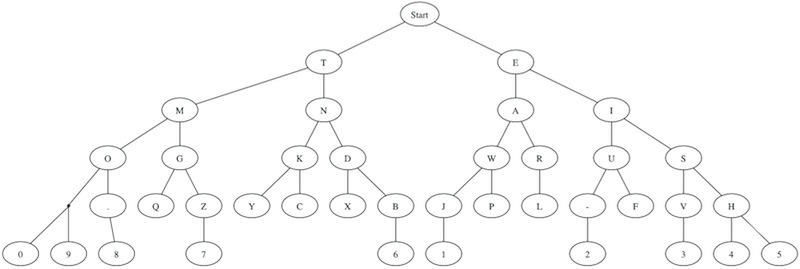
It’s not quite right yet, but I’ve never worked with Graphviz before this evening. Strongly influenced by the graphic on learnmorsecode.com. The wikipedia one is the wrong way round.
Source: morse.gv
-
One year of amateur radio: what works
So I’ve just got my digital mode setup working again. It seems that somewhere, somehow, a driver for the SignaLink USB decided to stop working, and at best I got no signal on transmit and a very very quiet one on receive. Now my mind’s back in radio mode, I realise there’s a ton of stuff I’ve bought and found to be of variable utility. This is the good stuff:
- Rigblaster Pro: this audio interface is far larger and far more expensive than it needs to be, but I got it used for a good price. Coupled with a $3 (!) USB sound card, it makes a sensitive and controllable sound device. I think I now prefer serial PTT-controlled audio interfaces to the SignaLink’s vox-style “Make a noise and I’ll transmit it” mode. It means you won’t accidentally tx system noises. That’s worth having another USB cable lurking about.
- LDG autotuner: because of the wild and pointless diversity in radio interfacing, LDG makes a bunch of autotuners for specific radio models. Mine just works, and will tune my mini-G5RV from 10 to 80(ish) metres.
- Big external meter: a cheap LDG meter is way better than the fiddly bar graph on the front of my FT-857D. I have it set up for signal on receive, and perhaps slightly unusually, AGC on transmit. Since I have a tuner and run almost entirely digital modes, it’s important that my signal doesn’t distort, so seeing AGC and being able to tweak it is important.
- Heil Pro-Micro headset: this is comfy, and keeps the family sane. I have the footswitch too, which really helps to run nets.
- Quarter-wave dual-bander HT antenna: The rubber ducks that all my HTs have are a bit rubbish. A simple replacement antenna allows me to talk through fairly distant repeaters from my sheltered back garden.
- WinKeyer USB: I’m just starting morse. The WinKeyer kit was so well put together it was a delight to build, and seems to be an utterly sound keyer.
- Fldigi: the digital mode program. Reliable, full-featured and free. It basically runs all the time on my shack computer.
- Chirp: I can program all my HTs and my HF rig with this. It’s truly great, and miles better than proprietary programming software.
- PSKReporter: a few minutes after calling CQ, I can see where in the world I’ve been heard. This automatic reverse-beaconing site is magic, and I’m amazed that a lot of digital users don’t even know it’s there.
My one annoyance about having a Linux-based shack is that ham radio is still very stuck in using serial ports. None of my computers have hard-wired RS232 ports, so I rely on USB serial adapters. These mostly work well, but Linux has a habit of shuffling the allocations around, so what was /dev/ttyUSB0 controlling your rig today might be ttyUSB1 tomorrow. You can get around this (if the software supports it) buy using long serial device names from /dev/serial/by-id/, which don’t change. They don’t change, that is, unless you have two Prolific serial interfaces that don’t have serial numbers set, so I can only have one attached at a time. Annoying.
-
facebook paranoia
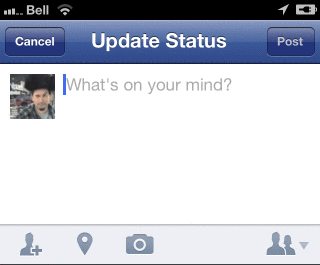
(idea and script by Catherine Raine. animation by me.)
-
peaksaver plus, dammit
Toronto Hydro’s just announced peaksaver PLUS, where you get a free Blueline Power Cost Monitor. Dammit! If only I hadn’t already bought one …
(and no, I haven’t yet got the Arduino wireless monitor running, which was actually the whole reason I got into ham radio.)
-
… with Bright & Lion
 (source photo by Jeff Friesen for Canadian Geographic article Blacksmith’s back.)
(source photo by Jeff Friesen for Canadian Geographic article Blacksmith’s back.) -
confuzzled: fldigi seems to be interfering with itself …
Fldigi used to work fine, but recent updates may have caused me to drop off the face of the (radio) earth. What it seems to be doing — and I don’t find this at all plausible — is causing interference with its own audio stream when its window has focus, but receiving perfectly when the program window is hidden. As Fldigi is a highly interactive program, this is not much use.Here’s an audio sample showing what I mean: fldigi-psk14070-VA3PID-201206092107z. It’s about 45 seconds long, a sample of the 20m PSK31 band this afternoon, and comprises:- 0-15 seconds: fldigi’s window is in focus. None of the traces in the waterfall resolve to meaningful text.
- 15-30 seconds: I changed focus to another program. The waterfall traces snap into focus; QSOs become readable. The conversation at 2383 Hz goes from line noise to a very clear “… 73 73 Jim and thanks for ans[w]ering the cq …â€
- 30-45 seconds: fldigi’s window is back in focus, and all decoding is cut off.
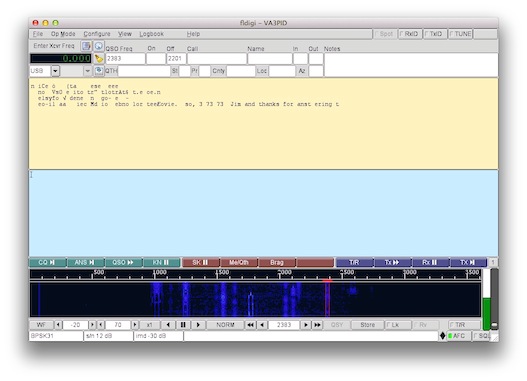 I’m running fldigi 3.21.43-1~kamal~precise from the Ubuntu Amateur Radio Software Updates repo. Hardware is a Thinkpad R51 (a bit old), latest Ubuntu 12.04 LTS, a FT-857D into a Signalink USB, and the audio’s being handled by PortAudio. I’m stumped!
I’m running fldigi 3.21.43-1~kamal~precise from the Ubuntu Amateur Radio Software Updates repo. Hardware is a Thinkpad R51 (a bit old), latest Ubuntu 12.04 LTS, a FT-857D into a Signalink USB, and the audio’s being handled by PortAudio. I’m stumped!Update: It was a volume thing. Linux had decided that I didn’t need my main system volume above 10%, so fldigi was picking up noise only.




